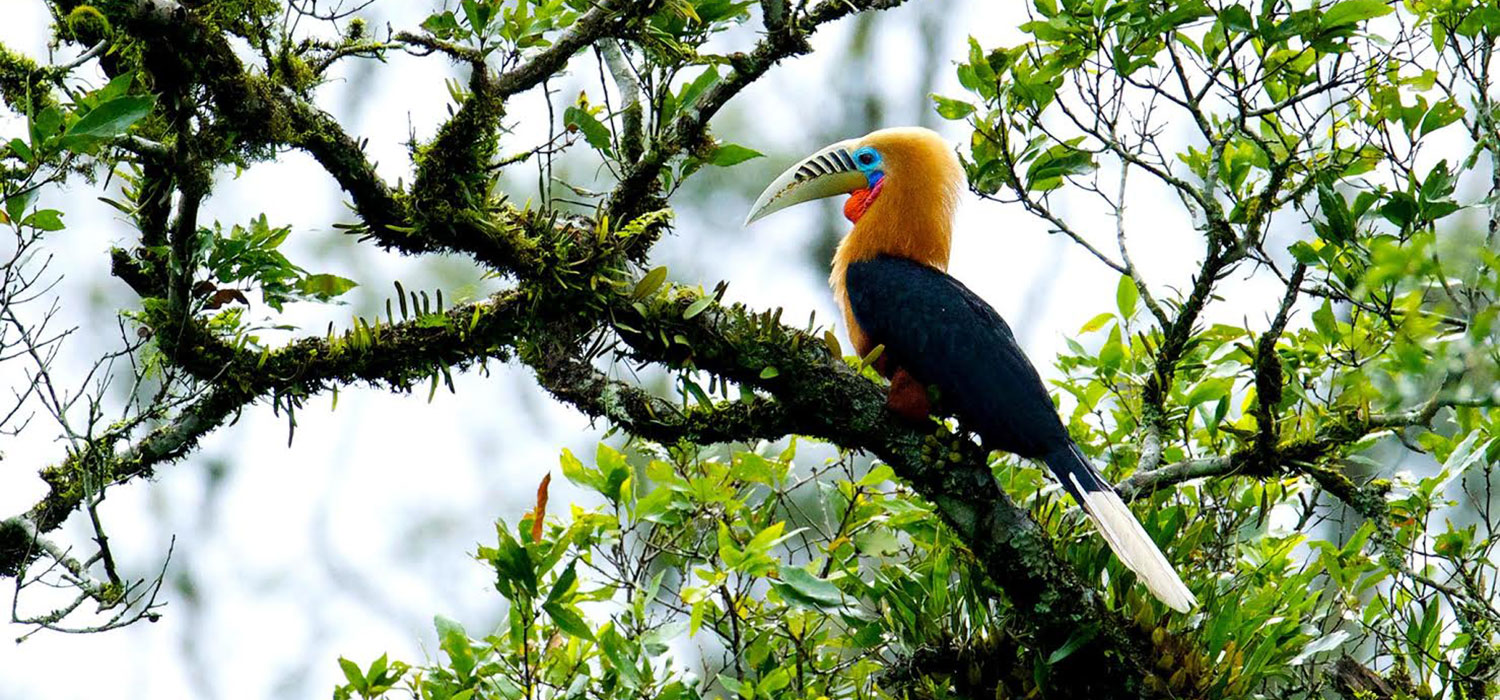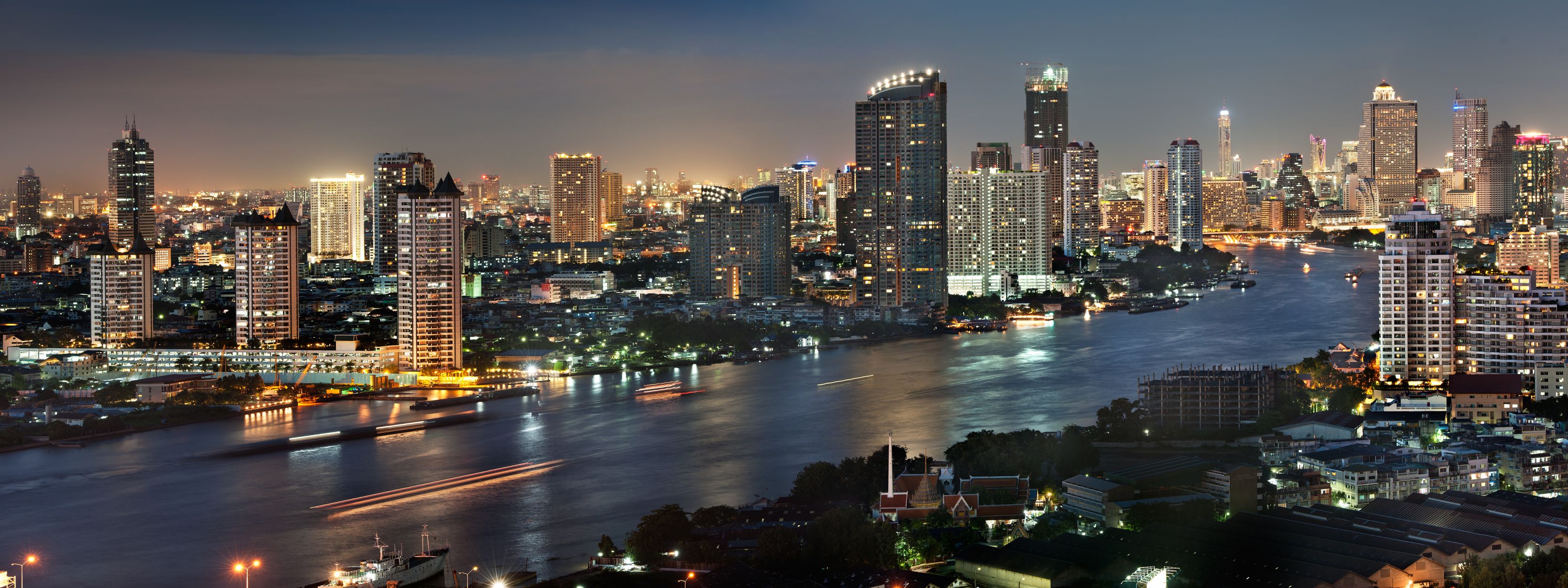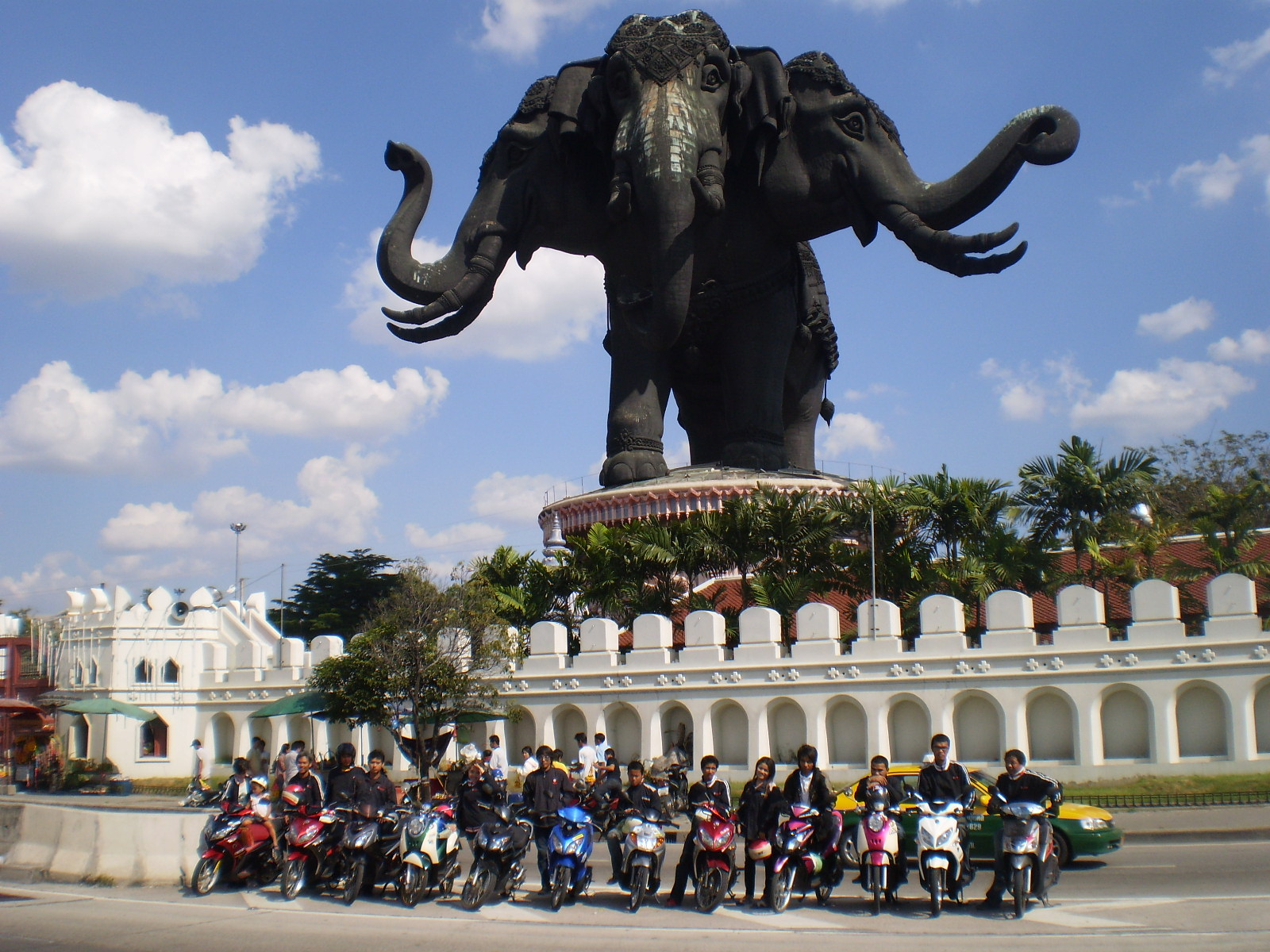One of the great attractions for nature tourists visiting Thailand is the diversity of environments extending across mountain peaks, lowland rainforests, mangroves, coral reefs, farmland and urban jungles. Within a day, or even a few hours travel, one can easily make the transition between these places and witness natural marvels large and small.
For wildlife enthusiasts no group maintains interest and pleasure more than birds. While special efforts are required to see in the wild charismatic species such as elephants and primates, birds are found across the entire spectrum of environments from pristine to severely degraded areas.
Part of the attraction for birds lies in their diversity. Nine hundred and seventy eight bird species have been recorded in Thailand, approximately 10 percent of the world’s total. At the Isthmus of Kra between latitudes 11 degrees and 13 degrees north, a major biogeographic transition between Indochinese and Sundaic forests produce a special diversity of birds with a total of 152 species of birds reaching the northern or southern range limits of their geographic ranges.
Two-thirds of Thai birds are residents, the remainder are seasonal visitors. Locations where migrants congregate, often in large numbers, are highly accessible making Thailand a special destination for birdwatchers.
Many birds are susceptible to human disturbance because they have small geographic ranges, a result of specific habitat requirements. For example, Deigbab’s babbler – a non-descript forest bird is found on Doi Chiang Dao and nowhere else in the world. Gurney’s pitta are only found in lowland rainforests. Fewer than 30 birds remain in the last known population in Thailand at Khao Nor Chuchi, Krabi.
Efforts by local and international conservation agencies strive to increase protection efforts and reforest areas encroached by rubber farmers, though time is running out. With approximately 20 percent of the birds found in Thailand being globally or regionally endangered species, this makes the country a birdwatching haven for bird enthusiasts.
Identifying birds
Birds are distinguished first by their size and shape. They range from diminutive flowerpeckers, sunbirds and white-eyes, about the size of your index finger, to lanky storks and egrets that stand almost a meter tall, and Green peafowl with its spectacular 2 meter tail. The form of the beak offers vital clues about the bird’s diet. For example a thin curved tube for sipping nectar or a sharp hook for tearing flesh. The pattern and color of plumage can tell apart the sexes as in pheasants where males are bright and striking, and females are drab and dowdy. By far the most useful character for identification is a bird’s voice. This is especially true in the forests where on average 90 percent of birds are hidden from view. The most experienced birdwatchers in the tropics know their songs and calls.
Best time to see birds
The nesting season is a good time to be watching birds. During this most active time in a bird’s life a variety of vocalizations and behaviors are exhibited. In Thailand, as in other tropical countries, the nesting season coincides with the period when food is in abundant supply. A bird expends much energy in courting, mating, incubating eggs, defending a nest and feeding offspring. Most birds nest during the transition between dry and wet seasons when new leaves and grass shoots sprout. This occurs from February to June. Certain birds depend on the availability of water and nest throughout the rainy season.
Migrants are best observed during their passage into or out of the country, or as they pass through on their way to other places. Most conspicuously, half a million ducks spend their winter in Thailand, feeding and resting in watery roosts from Chiang Saen to Thale Noi. Thousands of Garganey and Lesser treeduck flock during January and February.
Shorebirds like sandpipers, stints and plovers migrate long-distances between nesting grounds in Eurasia and tropical Asia and wintering grounds in Australasia. They stop to feed in Thailand’s mudflats and mangroves during September to May where they stock up on invertebrates and crustaceans. During October, the south ward migration of hawks over peninsular Thailand is an avian spectacle. Chinese goshawks, Japanese sparrowhawks, crested honey buzzards, black bazas and others are seen coasting on thermals in their thousands daily. Less conspicuous is the blue-winged pitta, a ground dwelling bird that arrives with the rains to nest in deciduous and bamboo forests, and escapes the hot season for the wetter forests of Malaysia and Sumatra.







